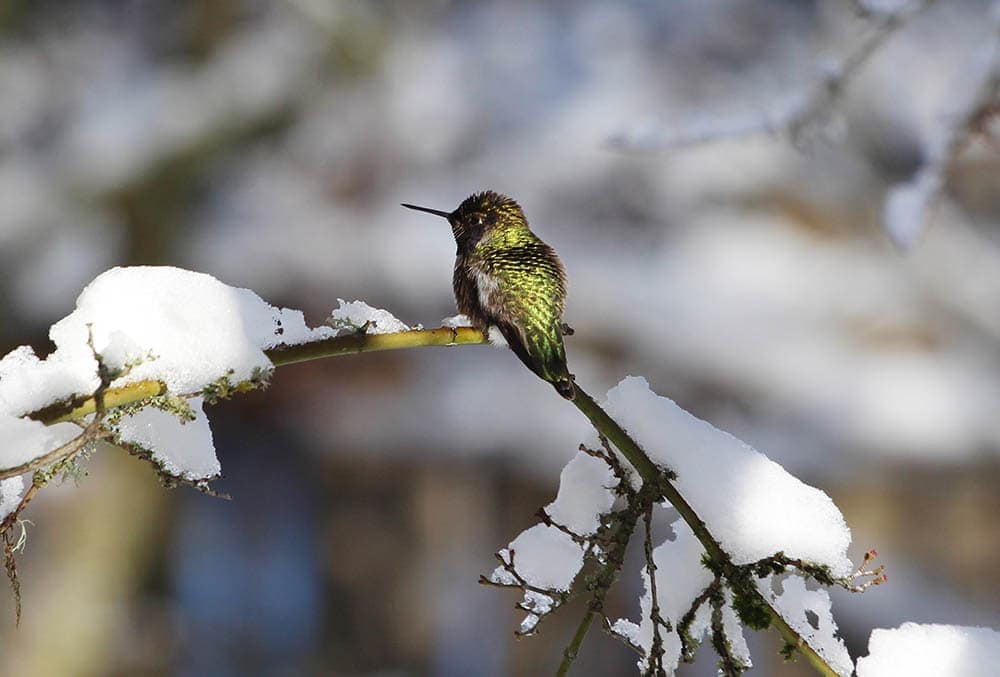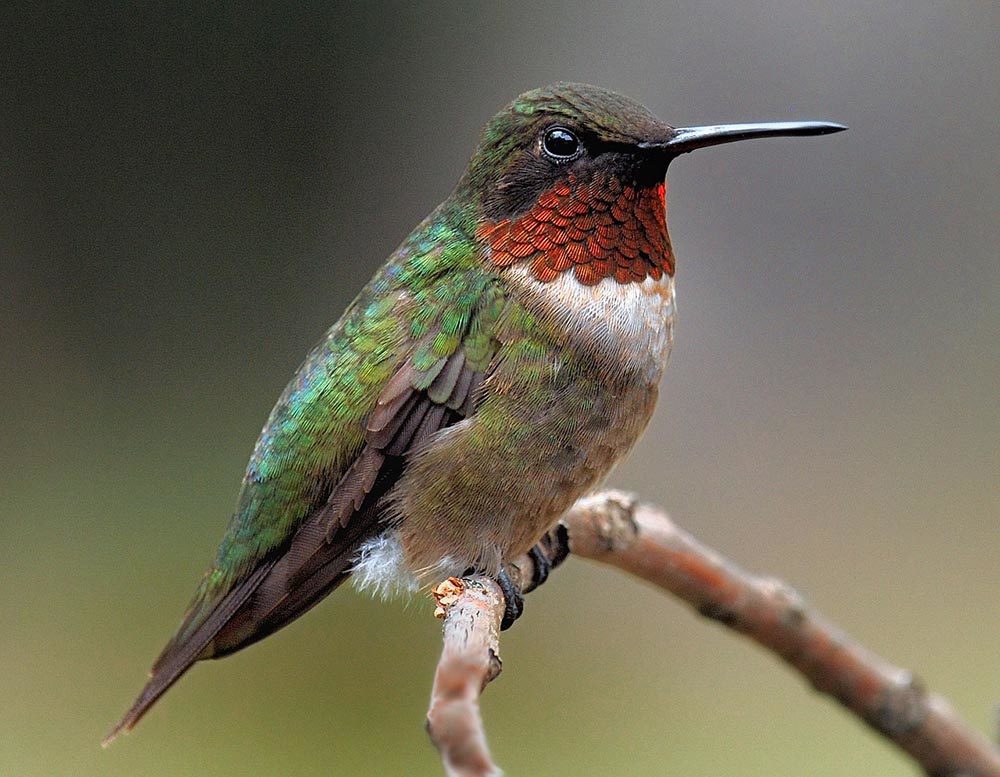Do Hummingbirds Hibernate? How Do Hummingbirds Survive Winter?
Last Updated on

Have you ever had a chance to observe a hummingbird in nature? They are magical creatures. They can beat their wings so rapidly it allows them to seemingly float from flower to flower. These vibrant little birds’ weight can range from 2 to 20 grams, with the average hummingbird weighing as much as a penny (3 grams). With such a tiny body, it is amazing that they can survive cold nights and weather during the year. But how do they do it? Do hummingbirds hibernate to avoid being exposed to cold snaps?
Instead of hibernation, hummingbirds go into a state called torpor. Confused? Here is some information to help understand how these tiny but mighty hummingbirds can survive in cold spells through torpor.

Hibernation vs Torpor
Hibernation is how many animals survive the winter. When an animal hibernates, they slow down their metabolism. Hibernation also decreases their body temperature, leading to a much slower breathing rate and heartbeat. With their metabolism slowed down, they do not need to use as much energy foraging for food in cold climates. They also do not need to spend energy traveling to warmer environments to find food. Some animals hibernate for a few days, weeks, or months. Hibernation is a fantastic way animals survive the harsh winters.
Not all animals hibernate; the hummingbird is one of those animals. Instead, they go into torpor. Torpor occurs when animals are inactive when the temperatures drop. Like hibernation, animals in torpor have a lower body temperature and slower heart rate. However, torpor does not last as long as hibernation. It can last the day or night at most. Think of torpor like a light hibernation. When hummingbirds go into torpor, their metabolic rate drops by almost 95% and uses 50% less energy as they usually do when they are awake. Doing this allows them to make it through any cold snaps.

What Does a Hummingbird Look Like While In Torpor?
When a hummingbird is in torpor, usually they hang upside down and look like they are sound asleep. In fact, they are in such a deep sleep-like state that they often appear dead. You could even touch them, and they would not react. However, it is not recommended that you disturb a hummingbird or any animal while in torpor. After all, you would not like being poked if you were sleeping deeply! Instead, the hummingbird will come out of its state of torpor when the temperature warms up.
If you do see a hummingbird in a state of torpor and wonder when they will “wake up,” it will take a bit of time. Hummingbirds need about 20 minutes to an hour to wake up from being in torpor. It takes a bit of energy to revive from torpor, so the hummingbird will usually start off by shivering. Shivering helps get the blood moving and increases their temperature slowly. Once the hummingbird has come out of torpor, they need to eat, so off they will go to find a huge breakfast. This cycle of the hummingbird being active when it is warm and going into a state of torpor when the temperature drops will continue until the hummingbird does not need to conserve a large amount of energy.
Is Being In Torpor Dangerous For Hummingbirds?
Going into torpor is a normal survival method that helps hummingbirds survive. However, some hummingbirds can struggle coming out of torpor. This can happen if the hummingbird is old or weak. If a hummingbird does not come out of torpor in 2 hours, sadly, they might be ill or dead. Another risk hummingbirds face when being in torpor is that they are exposed to predators. Since they are essentially unresponsive, they will not be able to fly away if a predator approaches.
What Do Hummingbirds Eat During The Winter?
https://www.instagram.com/p/CaVyokhJqcd/
Since torpor only lasts a short period of time, hummingbirds will need to eat once they wake up. Most people assume that hummingbirds live on a diet of only flower nectar, but this is not true. During the year, hummingbirds also eat small insects and drink tree sap. These birds are resilient during all seasons!

Conclusion
Torpor is a normal way that hummingbirds make it through the winter. It is best not to disturb a hummingbird when they are in a state of torpor. Give them time to get their body back to a normal temperature. These tiny birds are strong and have evolved to tackle a drop in temperature.
Featured Image Credit: SANLYN, Shutterstock
About the Author Robert Sparks
Robert’s obsession with all things optical started early in life, when his optician father would bring home prototypes for Robert to play with. Nowadays, Robert is dedicated to helping others find the right optics for their needs. His hobbies include astronomy, astrophysics, and model building. Originally from Newark, NJ, he resides in Santa Fe, New Mexico, where the nighttime skies are filled with glittering stars.
Related Articles:
How to Clean a Refractor Telescope: Step-by-Step Guide
How to Clean a Telescope Eyepiece: Step-by-Step Guide
How to Clean a Rifle Scope: 8 Expert Tips
Monocular vs Telescope: Differences Explained (With Pictures)
What Is a Monocular Used For? 8 Common Functions
How to Clean a Telescope Mirror: 8 Expert Tips
Brightfield vs Phase Contrast Microscopy: The Differences Explained
SkyCamHD Drone Review: Pros, Cons, FAQ, & Verdict
